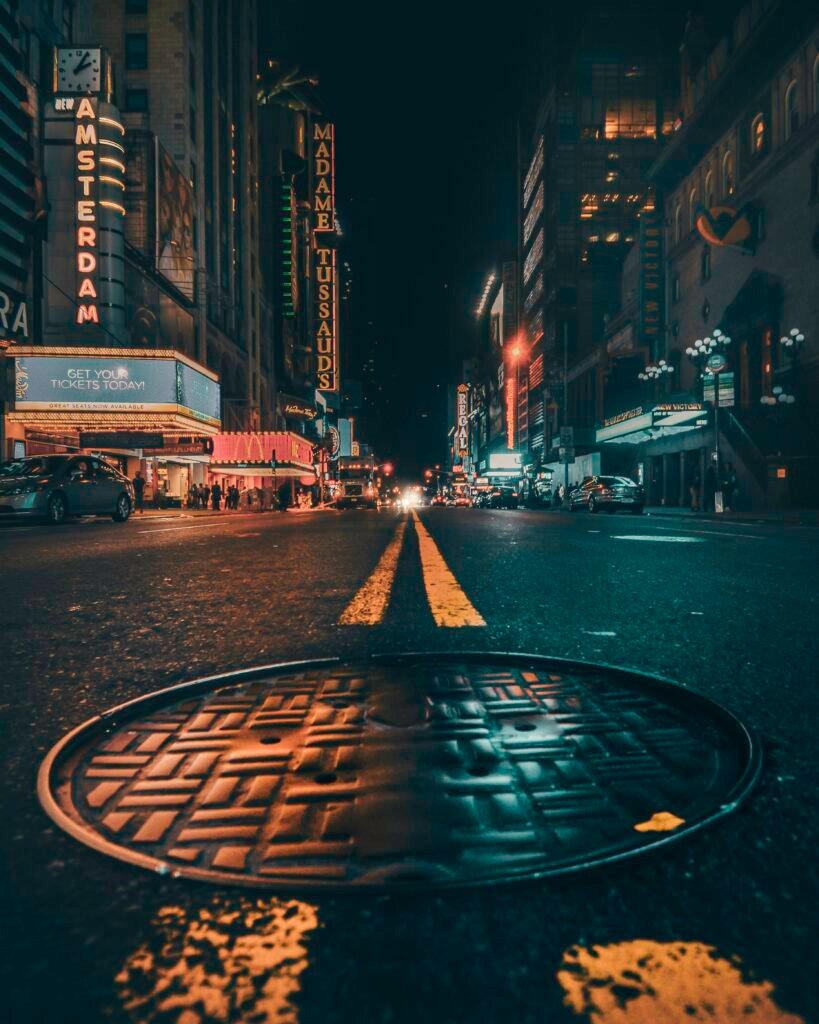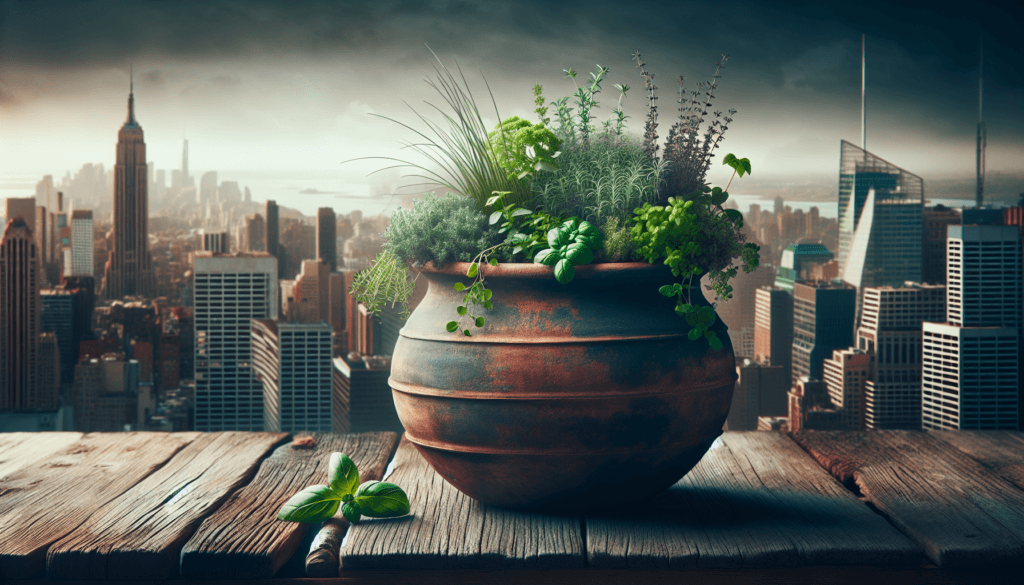You’re craving the satisfaction of growing your own fresh herbs and vegetables, but living in an apartment seems to be a barrier to this dream. Fear not, because urban gardening for apartments is not only possible but also incredibly rewarding. In this article, you’ll discover a plethora of tips and tricks to help you create your own mini oasis of greenery in the limited space of your apartment. From vertical gardens to recycled containers, you’ll learn how to maximize every inch of your living area to cultivate a thriving urban garden. So, let’s get started on this green adventure and bring the joy of gardening right to your doorstep!

Choosing the Right Plants
When it comes to urban gardening in apartments, one of the first things to consider is the amount of sunlight your space receives. Take a moment to observe the sunlight patterns in your apartment throughout the day. Is it a bright and sunny spot with plenty of direct sunlight, or is it a bit shadier with limited exposure? This will help you determine which types of plants will thrive in your space.
Once you have an idea of the sunlight conditions in your apartment, it’s time to select plants that are suitable for indoor conditions. Some plants are better adapted to thrive indoors, as they require less sunlight and can tolerate lower humidity levels. Look for varieties that are labeled as “indoor plants” or “low-light plants” for the best results.
When choosing plants for your apartment, it’s important to consider the available space. Do you have a spacious balcony or a small windowsill? Different plants have different growth habits and space requirements. For those with limited space, consider small or compact varieties that can be easily accommodated in pots or hanging baskets. On the other hand, if you have ample space, you can explore larger plant varieties that add a lush and vibrant touch to your apartment.
Another crucial factor to consider is the maintenance requirements of different plants. Some plants require more care and attention, while others are more forgiving and can thrive with minimal maintenance. Think about your lifestyle and the amount of time you can dedicate to your urban garden. If you’re a busy individual, opt for low-maintenance plants that won’t require constant attention and care.
Container Gardening
Container gardening is a fantastic solution for urban gardening in apartments. It allows you to grow a variety of plants in portable containers, making it easy to move them around and optimize your limited space. To get started, you need to select the right containers for your plants.
When choosing containers, it’s important to consider the needs of your plants. Some plants, like succulents, thrive in shallow containers, while others prefer deeper pots to allow for healthy root growth. Ensure that your containers have adequate drainage holes to prevent waterlogging, which can damage the roots of your plants.
In addition to drainage, lightweight containers are an excellent choice for apartment gardening. They make it much easier to move your plants around and rearrange your garden as needed. Look for containers made from materials like plastic or lightweight ceramics that won’t add unnecessary weight to your urban garden.
Vertical gardening is a clever way to optimize limited space in an apartment. By using walls, trellises, or hanging baskets, you can maximize your planting area and create a stunning vertical display. Vining plants like pothos or ivy are perfect choices for vertical gardening, as they can effortlessly climb and add a touch of greenery to your walls.

Soil and Fertilizers
The quality of your potting soil is vital for the health and growth of your plants. When choosing potting soil, opt for high-quality mixes that are specifically formulated for container gardening. These mixes are usually lightweight, well-draining, and enriched with nutrients that plants need to thrive.
To further enhance the nutrient content of your soil, consider adding organic matter. Compost, aged manure, or worm castings are excellent choices for improving soil fertility. These natural additives help retain moisture, promote healthy root development, and provide essential nutrients to your plants.
Fertilizers play a crucial role in urban gardening, but it’s important not to overdo it. Using slow-release fertilizers is an effective way to ensure a steady supply of nutrients for your plants without risking over-fertilization. Follow the instructions on the packaging and apply the fertilizer sparingly to avoid burning or damaging your plants’ roots.
Over-fertilization can be detrimental to the health of your plants. It can lead to excessive foliage growth, weak stems, and even nutrient imbalances. Remember that less is often more when it comes to fertilizing your apartment garden, and always monitor your plants’ response to make adjustments if necessary.
Watering Techniques
Understanding the watering needs of different plants is crucial for their survival and growth. Some plants prefer consistently moist soil, while others are more tolerant of drying out between waterings. Research the watering requirements of your plants and develop a watering routine that suits their needs.
Self-watering containers are a fantastic solution for busy individuals or those prone to forgetfulness. These containers have a reservoir at the bottom that gradually releases water to the plants’ roots, ensuring a constant supply of moisture. They are especially useful for plants with higher water requirements.
Monitoring soil moisture levels is essential for preventing both underwatering and overwatering. Invest in a moisture meter or simply stick your finger into the soil to determine its moisture content. Ideally, the soil should be slightly moist but not waterlogged. Adjust your watering routine accordingly to ensure the optimal moisture balance for your plants.
Avoiding water stagnation and overwatering is crucial for the health of your apartment garden. Waterlogged soil can lead to root rot, fungus, and other plant diseases. Always ensure that your containers have proper drainage to allow excess water to escape. If you notice any signs of overwatering, such as yellowing leaves or soggy soil, adjust your watering habits and allow the soil to dry out between waterings.

Lighting Solutions
Assessing the available natural light in your apartment is essential for selecting the right plants and ensuring their proper growth. Different plants have different light requirements, ranging from low light to bright, direct sunlight. Take note of the intensity and duration of natural light in your space to choose the appropriate plants.
Supplementing natural light with artificial grow lights is an effective way to ensure that your plants receive adequate light, especially in apartments with limited exposure to sunlight. LED grow lights or fluorescent lights are popular choices for indoor gardening. They provide a spectrum of light that mimics natural sunlight and promotes healthy plant growth.
When selecting grow lights, it’s important to consider the type of light they emit. Different plants have different light requirements, with some favoring cool light and others thriving under warm light. Research the light preferences of your plants and choose the appropriate grow lights to meet their needs.
Ensuring proper light duration and intensity is crucial for the growth and development of your plants. Most indoor plants require around 12-16 hours of light per day. However, it’s essential to avoid exposing them to light continuously, as they also need a period of darkness for rest. Use timers to automate your grow lights and maintain a consistent light schedule for optimal plant growth.
Pest Control
Indoor gardening is not immune to pests, but preventive measures can help you avoid infestations and keep your plants healthy. Begin by familiarizing yourself with common pests that can infest indoor plants, such as aphids, spider mites, or fungus gnats. Knowing what to look for will allow you to spot and address any pest problems early on.
Implementing preventive measures is essential for keeping pests at bay. Inspect any new plants before introducing them to your apartment garden. Quarantine them for a few weeks to ensure that they are pest-free before mingling them with existing plants. Additionally, keep your apartment clean and free of plant debris as it can attract pests.
Using organic pest control methods is an environmentally friendly way to tackle pest problems. Neem oil, insecticidal soap, or diluted vinegar solutions can be effective in treating mild infestations. They are safe for both your plants and the environment, making them a great choice for apartment gardening.
Regularly inspecting and treating your plants is crucial for containment and control. Set aside time each week to thoroughly examine your plants, checking for any signs of pest damage or disease. If you spot any issues, address them promptly with appropriate treatments to prevent further spread and damage.

Plant Maintenance
Pruning and trimming are essential tasks for maintaining the health and appearance of your apartment garden. Regularly removing dead or damaged leaves, stems, or flowers helps promote healthy growth and prevents the spread of diseases. Utilize clean, sharp gardening tools for precise and efficient pruning.
Supporting climbing or vining plants is crucial for their proper growth and aesthetics. Use stakes, trellises, or frames to provide structural support and guide their growth. Proper support prevents your plants from become tangled or toppling over, ensuring that they thrive in your apartment garden.
Staking and trellising are essential techniques for preventing the sprawling growth of certain plants. Tomatoes, peppers, or even herbs like rosemary can benefit from staking to keep them upright and promote better air circulation. Invest in sturdy stakes or trellises to support your plants and encourage healthy growth.
Regularly checking for signs of disease or nutrient deficiencies is vital for the overall health and vitality of your apartment garden. Discolored leaves, unusual spots, or stunted growth can indicate underlying issues that need to be addressed. Promptly diagnose and treat any problems to prevent further decline and maintain a vibrant garden.
Creating a Microclimate
Understanding the microclimate of your apartment is crucial for creating a suitable environment for your plants. Factors such as humidity, air movement, and temperature play a significant role in plant growth and health.
Humidity trays or humidifiers are excellent tools for increasing the humidity levels in your apartment. Many indoor plants, especially tropical varieties, thrive in humid conditions. Placing a tray filled with water near your plants or using a humidifier can create a microclimate that mimics their natural habitat.
Creating air movement with fans is important for preventing stagnant air and reducing the risk of fungal diseases. Gentle airflow helps strengthen plant stems and prevents excess moisture from lingering on leaves or in the soil. Position a small fan near your plants, ensuring that it provides gentle, indirect airflow.
Controlling temperature is vital for optimal plant growth. Most indoor plants thrive in temperatures ranging from 65-75°F (18-24°C). Avoid placing your plants near drafty windows or heat sources that can cause significant temperature fluctuations. Keeping your apartment within the preferred temperature range ensures that your plants are comfortable and can thrive.

Choosing Edible Plants
Growing herbs in limited space is an excellent way to have fresh culinary ingredients at your fingertips. Herbs like basil, mint, or parsley can be easily grown in pots or containers and provide a constant supply of aromatic flavors for your kitchen creations.
Selecting compact vegetable varieties is a wise choice for apartment gardening. Look for dwarf or patio varieties that are bred specifically for container cultivation. Tomatoes, peppers, lettuce, and even carrots can thrive in pots or hanging baskets, offering you a taste of homegrown produce.
Cultivating microgreens and sprouts is ideal for those with limited space and a desire for fast results. These young and tender greens are packed with nutrients and can be harvested within a few weeks. They require minimal space, making them perfect for apartment gardening.
Exploring dwarf fruit trees and berry bushes is an exciting way to incorporate fresh fruits into your apartment garden. Some fruit trees and berry varieties have been specially bred to be compact and suitable for container gardening. Look for miniature apple or citrus trees, as well as blueberry or strawberry plants, to enjoy homegrown fruits in your apartment.
Community Gardening Opportunities
Joining local gardening groups or clubs is an excellent way to connect with fellow gardeners and expand your gardening knowledge. These groups often organize workshops, seed swaps, or plant sales, providing valuable resources and support for your apartment garden. You can learn from experienced gardeners and share your own experiences with others.
Participating in balcony or rooftop gardening initiatives is a fantastic opportunity to contribute to your community and be part of urban greening projects. Many apartment buildings or neighborhoods have designated gardening spaces where residents can grow their own plants and create a vibrant green oasis in the midst of the city.
Contributing to urban greening projects goes beyond your own apartment garden. You can get involved in larger-scale initiatives such as community gardens, urban farms, or street tree planting programs. By volunteering your time and knowledge, you can make a significant impact on the greening of your city and create a more sustainable urban environment.
Sharing knowledge and experiences with fellow gardeners is a wonderful way to foster a sense of community within the apartment gardening world. Join online forums, social media groups, or local gardening meetups to connect with other like-minded individuals. By sharing your own tips and tricks, you can inspire and help others on their apartment gardening journey.
In conclusion, urban gardening for apartments offers a multitude of opportunities to create a lush and thriving green space even in the midst of a bustling city. By carefully choosing the right plants, utilizing container gardening techniques, optimizing soil and fertilizers, implementing proper watering techniques, creating suitable lighting conditions, controlling pests, and providing regular plant maintenance, you can successfully cultivate a flourishing apartment garden. Additionally, by creating a microclimate that suits your plants’ needs, choosing edible plants that fit your space, and participating in community gardening opportunities, you can fully immerse yourself in the world of apartment gardening and contribute to a greener and more sustainable urban environment. So, don’t hesitate to embark on your apartment gardening journey and enjoy the benefits of a green and vibrant oasis right at your doorstep.


